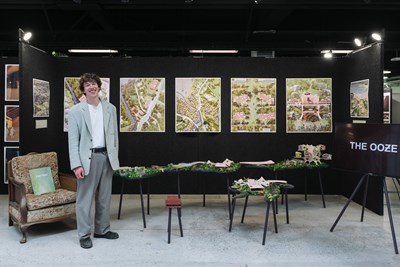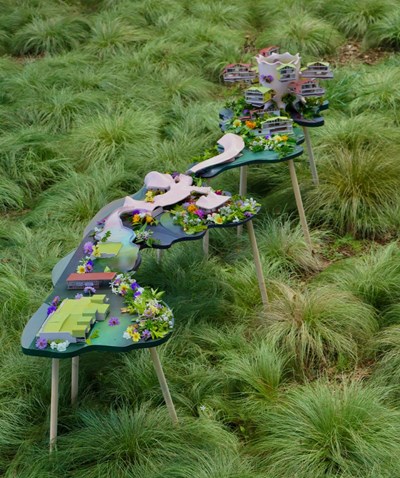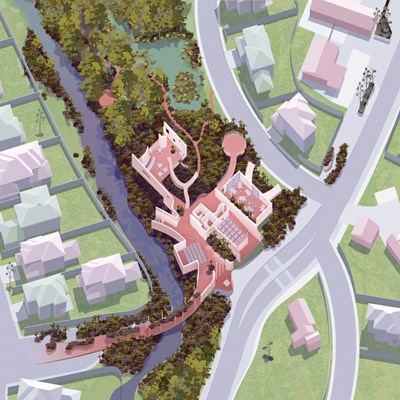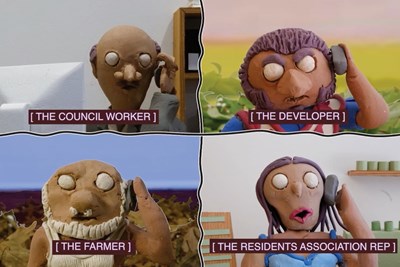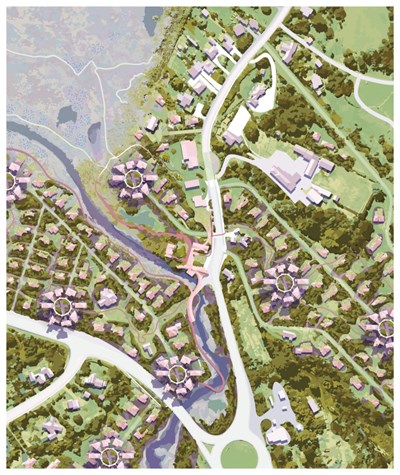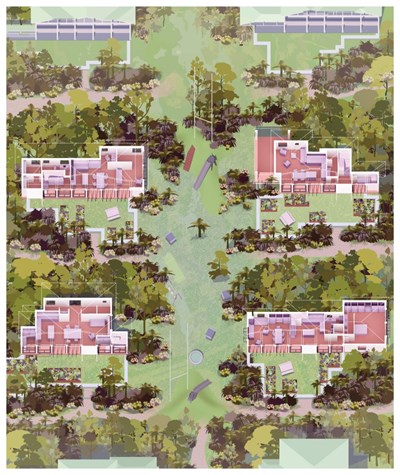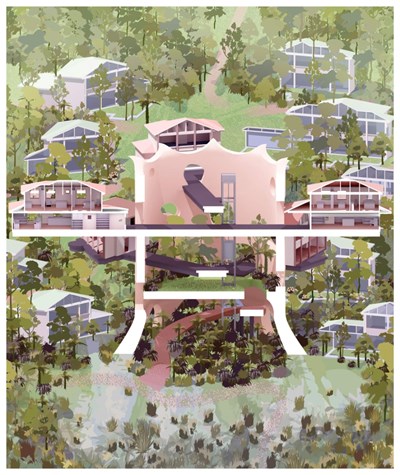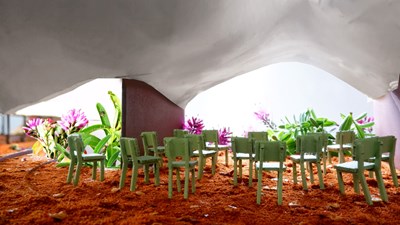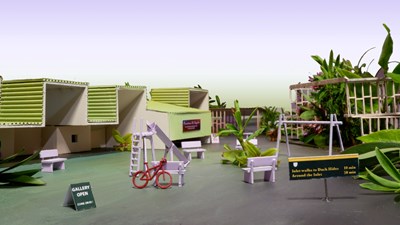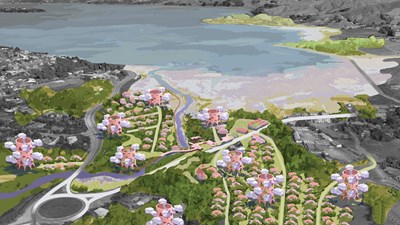Will Martel from Waipapa Taumata Rau, The University of Auckland, Te Pare School of Architecture and Planning is Highly Commended for his project 'The Ooze'.
Project description
The Ooze is a story about traumatic events threatening the largest remaining wetland reserve in the lower North Island and the adjacent peri-urban village of Pāuatahanui, about 40 kilometres northwest of Wellington. The tale is told from the perspective of the wairua, the spiritual dimension and holistic wellbeing, of Pāuatahanui.
Pāuatahanui was first occupied by Ngāti Toa. The warrior-leader Te Rangihaeata established his pā here in 1846 during the regional land war following colonial settlement in the 1850s. Currently, Pāuatahanui School stands on the pā site, and the village’s services are all a short walk from each other along the coastal road, the town’s main thoroughfare. Pāuatahanui is threatened with being engulfed by a major suburb that has ballooned since the 70s, and is almost certainly to be engulfed in the northern advance of greater Wellington along the Transmission Gully highway corridor.
Suburban sprawl has many unfortunate cultural, environmental and social dimensions. The Ooze proposes alternatives and, through storytelling, portrays them to a general audience. The three short films that sit in conjunction with architectural propositions are comical, overt and fictitious. They discuss the nature of The Ooze from its conception and suggest a solution.
Jury citation
As suburban residential developments sprawl to house humans, they can impact on ecology, history and culture. Using storytelling as an informative technique, this local tale portrays the wairua (spirit) of Pāuatahanui, a township that lies in the path of potential development.
Three short films, which sit in conjunction with architectural propositions, offer alternatives to urban sprawl, and portray important ideas by engaging and emoting. In their strength of delivery, they have the capacity to connect many people to the conversation and to understand the subject and its impact.
In his outstanding presentation, Will expressed a careful hand in the execution and delivery of ideas and the opportunity to shift thinking. He gives us cause to pause and reflect on where urban sprawl has originated from and how we might respond to the challenges it presents. The project offers a message of hope and promise, with a warning for us all. Who will stand up to The Ooze?
It is lovely to see what students are thinking and how they are responding to issues through their education, said the judges.




